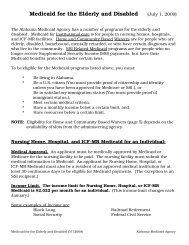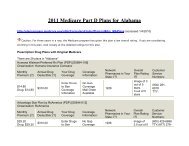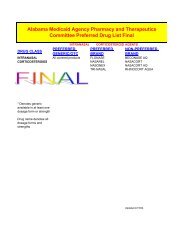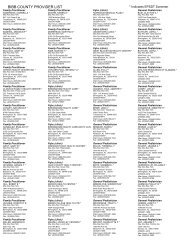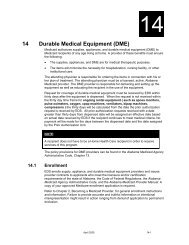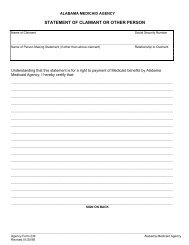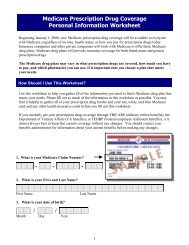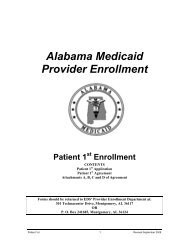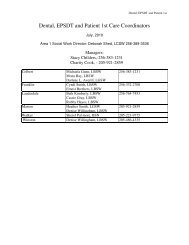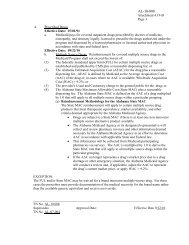PHARMACOTHERAPY REVIEW CNS STIMULANTS for treatment of ...
PHARMACOTHERAPY REVIEW CNS STIMULANTS for treatment of ...
PHARMACOTHERAPY REVIEW CNS STIMULANTS for treatment of ...
Create successful ePaper yourself
Turn your PDF publications into a flip-book with our unique Google optimized e-Paper software.
SEDATIVE-HYPNOTICS REVISITED – GERIATRIC CONSIDERATIONSAt the August 6, 2003 P&T Committee meeting, when addressing the issue <strong>of</strong> sedativehypnoticsto be considered <strong>for</strong> preferred drug status, the P&T Committee voted to table,<strong>for</strong> further evaluation, the recommendation that “no brand name first generationbenzodiazepine or nonbenzodiazepine GABA agonist is recommended <strong>for</strong> preferred drugstatus.”P&T Committee discussion revolved around the clinical propriety <strong>of</strong> benzodiazepineGABA agonist use in the elderly in the context <strong>of</strong> the “Beers List.” The possible addition<strong>of</strong> a brand name nonbenzodiazepine GABA agonist to the recommendation <strong>for</strong> preferredstatus was discussed.The Beer’s List is a national guideline <strong>for</strong> fostering safe, appropriate and effectivemedication management in the elderly. Criteria were originally developed in 1991 (BeersMH, Ouslander JG, Rollingher I, et al. Explicit criteria <strong>for</strong> determining inappropriatemedication use in nursing home residents. Arch Intern Med. 1991;151:1825-32). Thesecriteria were updated in 1997 (Beers MH. Explicit criteria <strong>for</strong> determining potentiallyinappropriate medication use by the elderly: an update. Arch Intern Med. 1997;157:1531-36.) and are included in Attachment A <strong>for</strong> review.Table 1 <strong>of</strong> Attachment A (Beer’s List) is a list <strong>of</strong> medications to avoid or use withinspecified dose and duration ranges in elderly patients. These criteria were developedspecifically <strong>for</strong> the frail elderly patient, especially those who are residents <strong>of</strong> long-termcare facilities. The drugs in Table 1 do not represent absolute contraindications, are notabsolutely contraindicated in the elderly as per the package labeling, and may beacceptable <strong>for</strong> use in most elderly patients.Table 2 <strong>of</strong> Attachment A (Beer’s List) is a suggested list <strong>of</strong> medications to avoid inelderly patients with specific diseases. Risk severity is rated as low or high. Medicationssuggested <strong>for</strong> avoidance in the elderly under certain medical conditions are not inalignment with package labeling as they are not typically listed as absolutecontraindications in package labeling. The drug-disease recommendations in Table 2 <strong>of</strong>the Beer’s List (attachment A) are typically presented as warnings, precautions, riskfactors, or special considerations <strong>for</strong> special populations in the package labeling.Selection and use is then left to the clinical judgment <strong>of</strong> the prescriber.Within the specific context <strong>of</strong> sedative-hypnotic prescription drugs, the potentialproblem/relative risk is listed as the same between the benzodiazepine GABA agonists,temazepam and triazolam, and the nonbenzodiazepine GABA agonist, zolpidem (Table 1,Attachment A). Guidance in the Beer’s List is on selecting appropriate doses <strong>of</strong>temazepam (15 mg), triazolam (0.25 mg) or zolpidem (5 mg). The Beer’s List ranks thepotential severity <strong>of</strong> risk from use <strong>of</strong> temazepam, triazolam and zolpidem as low <strong>for</strong> allthree agents.




